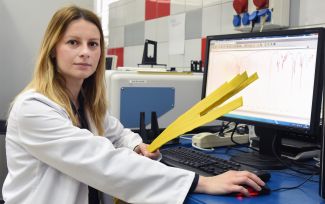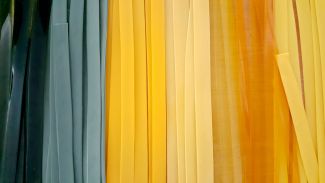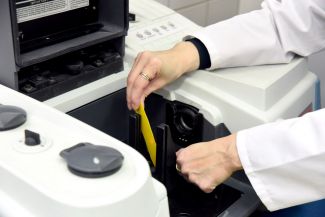Can you check the freshness of a food product without opening its packaging? Dr inż. Anna Masek of the Faculty of Chemistry, Lodz University of Technology, has been working on innovative, biodegradable packaging that will allow consumers to assess the quality of food or medical or other everyday use products contained therein. The research is funded with a grant from the National Centre for Research and Development.
What does it mean that the developed packaging is ‘smart’?
What we mean when we talk about smart or active packaging is controlled change of the colour of the material as a result of ageing or oxidation processes. Changes in the colour of the packaging (due to temperature changes or passage of time) indicate how fresh the products inside are. Natural, plant-derived substances are used as natural antioxidants and polymer aging time indicators. Weather conditions such as sunlight, temperature, precipitation contribute to polymer degradation processes. We want to develop active packaging by taking advantage of the properties of phytocompounds and biodegradable polymers.
Can it be used with all types of products?
The preliminary, tentative answer is yes, although further specialized studies are required to find out whether it will be effective for e.g. meat, pasta, fruits and vegetables. The range of its applications may be broad from packaging materials to food, medicine and everyday use products such as disposable tableware or toys.
Is it the first solution of its kind in the world?
There are other active packaging systems available, however, most of them are based on synthetic indicators that react to gases released during food fermentation or, say, due to temperature. What makes the research conducted at Lodz University of Technology stand out is the fact that only environmentally sustainable materials are used, mainly derived from plants. We work primarily with materials that are made from raw materials such as corn, turmeric. These materials have green friendly properties, are completely free from toxic additives and contaminants present in other polymers. We have been working on developing a technology of manufacturing biodegradable polyester packaging. Its implementation will boost waste management in the country. We want to define optimal composition and parameters for polyester packaging processing by injection moulding and extrusion. Plant-based substances will be used as natural anti-ageing substances.
What is the technology of its manufacturing?
Currently, we are working on manufacturing intelligent and eco friendly packaging materials that will contain colour indicators of the ageing time. Thanks to them, when grocery shopping, you will be able to see how the colour of such packaging changes, and thus you will know how long the product has been stored in it. It is important to note that these indicators are derived from plants and change their colour due to sunlight and other atmospheric factors such as temperature. We want to get indicators from fruits and vegetables, which will let us observe how the colour changes due to various associated factors and know how fresh the food inside the packaging is.
How will it benefit consumers?
Most importantly, consumers will be able to assess food quality, its fitness for consumption and freshness in a straightforward way. The added value of these products is that once they have become waste, they will be easily treated by biodegradation or composting . I think that in five years this packaging will be on store shelves.
It is worth being a scientist because...
you can change the world around you in a spirit of ecology.
Faculty of Chemistry
12/16 Stefanowskiego Street
90-537 Lodz, Poland



